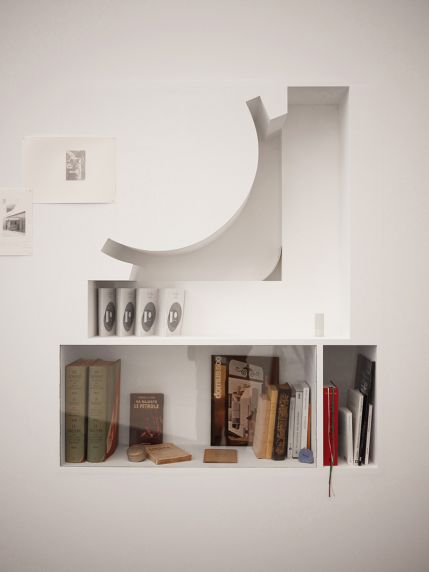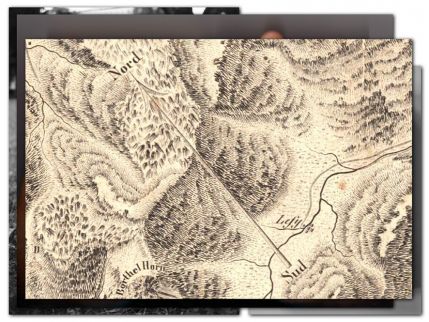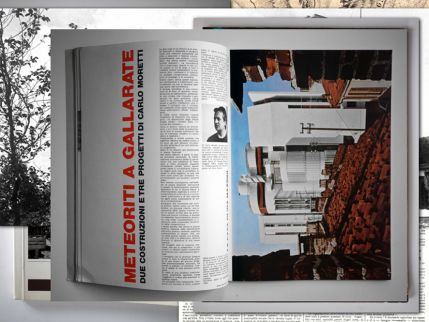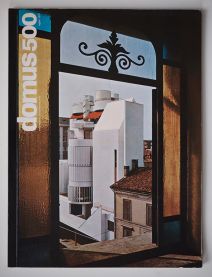Les corps attrapés par le discours – La colonna ritrovata
Exhibition and conference, in collaboration with Franco Buffoni
MAGA Museo Arte Gallarate,
"Voglio Vedere Le Mie Montagne", 7 February – 15 March 2015
Cur. Noah Stolz
One generation abandons the enterprises of another like stranded vessels.
H.D.Thoreau
"Les corps attrapés par le discours… » appears as a semi fictional and partly biographical inquiry, developed between Switzerland and Italy. From the grave of writer Alice Rivaz to the former Italian workers community of the Saint-Gervais neighborhood in Geneva, from the utopian « ideal cities » of architect Carlo Moretti to the Broken Column House of 18th century garden le Désert de Retz, this investigation follows a sinuous progression through the history of transalpine migrations and the unachieved projects of Modernity.
One of the main trigger of the inquiry is a seemingly trivial detail: Carlo Moretti’s missing column, which was "amputated" from one of his exemplary building in Gallarate, due to its excessive proximity to the road. This missing piece strangely echoes the ever unachieved utopian projects conceived by Moretti, as series of huge tower houses shaped like antique columns, developed from the 1980s. At MAGA museum, the missing column is reconstituted in its exact proportions and placed across the entrance, as a peculiar evidence, an object over which we might stumble, and which will initiate the collection of all other elements gathered.
Further on in the exhibition, the architecture plan of the museum –partly drawn by Moretti– translates into a specially designed bookshelf, embedded in the wall and hosting part of the exhibition’s archives, thus evoking Le Corbusier’s similar intervention at the Vila Turque in 1917. On the same wall are displayed a series of investigation notes and sketches, and documents, including a bronze cast of the modest dash separating the two dates on the grave of writer Alice Rivaz. A trait d’union between two epochs, and by extension between two cultures, two languages, that has been concretely activated in the conference, realized in collaboration with poet and translator Franco Buffoni.
>











